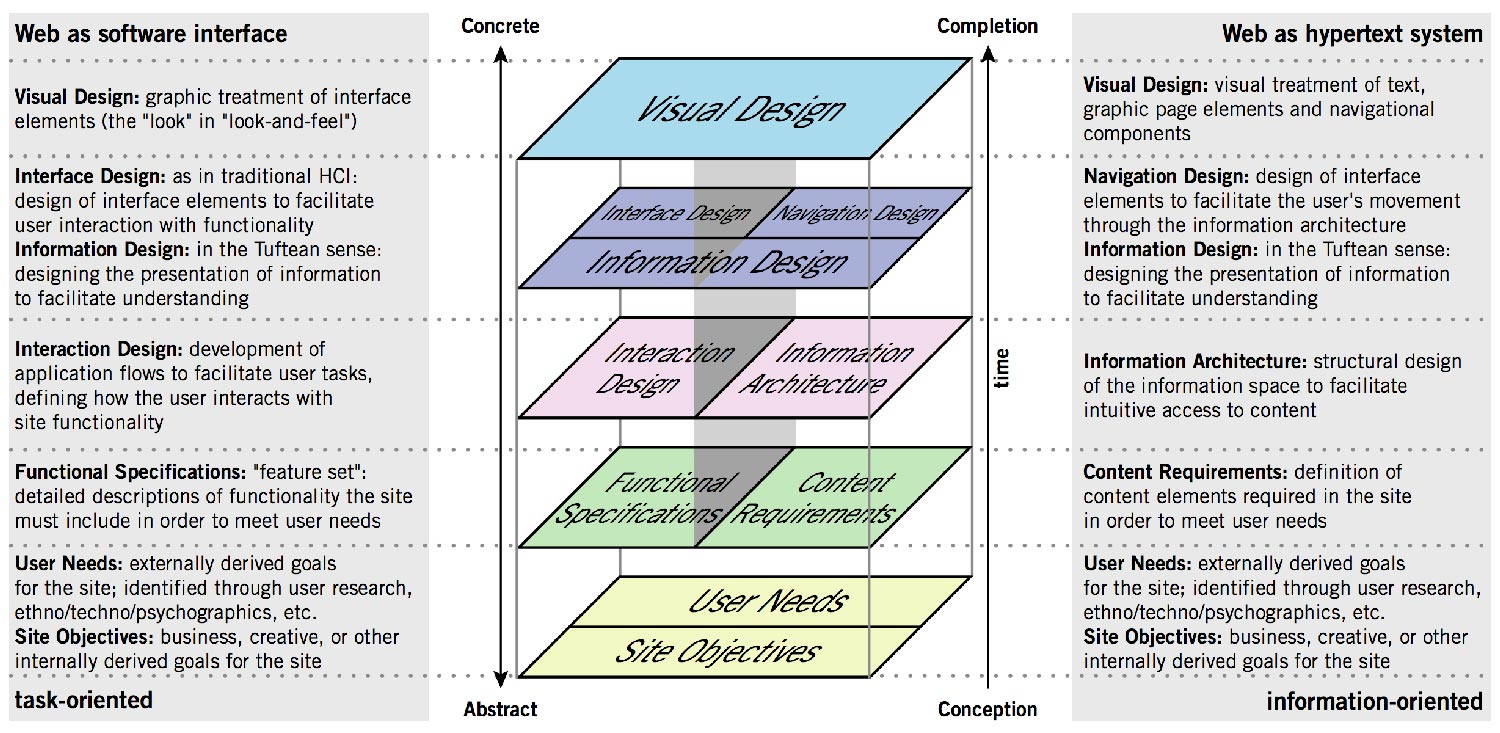design process
Overview
Understanding the design processes applied by UX professionals is the rage of the day. Therefore, I thought it would be fitting to share my experience with design processes. Over the course of my career, I have had the privilege of using several design processes:
- Waterfall
- ADDIE
- Agile
- Jesse James Garrett’s 5 Planes approach
- Double Diamond
- Design Thinking
- Design Sprints
General Approach
No matter the method used, I have always engaged in the following activities:
- Seeking to identify user needs and business objectives.
- Obtaining and confirming requirements and any known functional specifications (e.g., through interviewing stakeholders and subject matter experts or conducting design sprints).
- Engaging in efforts to learn more about user needs, processes, and pain points through research (e.g., ethnographic studies, contextual inquiry, interviews, surveys, etc.).
- Ideating and brainstorming about information architecture and interaction design principles.
- Beginning implementing IA and interaction design elements through initial construction of the interface.
- Facilitating data-driven efforts by validating designs via research.
- Iterating based on data obtained through research.
- Dialoguing with developers and quality assurance personnel during various stages of the design process, when possible and as applicable.
My flexibility enables me to operate via any method, focusing on achieving the goals at hand.
Agile
For agile environments, I strive to identify and commit to tasks during each sprint and report to the team daily and during the retro.
Lean
For Lean UX, I work to design and iterate quickly, seeking quick and actionable feedback on work to help the team achieve the associated goals.
Design Thinking
I value the ability to gather stakeholders together for an extended period of time and view design thinking as a way to quickly secure information and help drive design efforts efficiently.
Waterfall
I work to offset the longer timelines by optimizing efficiencies that eliminate rework and sharpen decision making via data.

Source: Jesse James Garrett — The 5 Planes Design Process
SKILLS & acumen
Research
- Heuristic analysis
- Remote usability testing
- Design thinking facilitation
- Interviewing
- Contextual analysis
- Ethnography
- Card sorting
- Survey design and management
- A/B testing
- Multivariate testing
- First-click testing
- Competitive analysis
- Formative & summative
- Qualitative & quantitative
- Data synthesis & analysis
Information Architecture
- Taxonomies
- Nomenclature
- Information scent analysis
- Task flows
- Optimizing findability
Resources
- Wireframing
- Prototyping
- Personas
- Experience maps
- Journey maps
- SWOT analysis
- POV decks
Form Factors
- Desktop
- Mobile phones
- Tablets
- Interactive TV
- Hardware
- Ergonomics
SDLC
- Waterfall
- Agile
- Lean UX
- Confluence
- JIRA
- VSTS
Miscellaneous
- Interaction design
- Interface design
- Instructional design
- Desktop publishing
- Photography
- Videography
- Social media management
